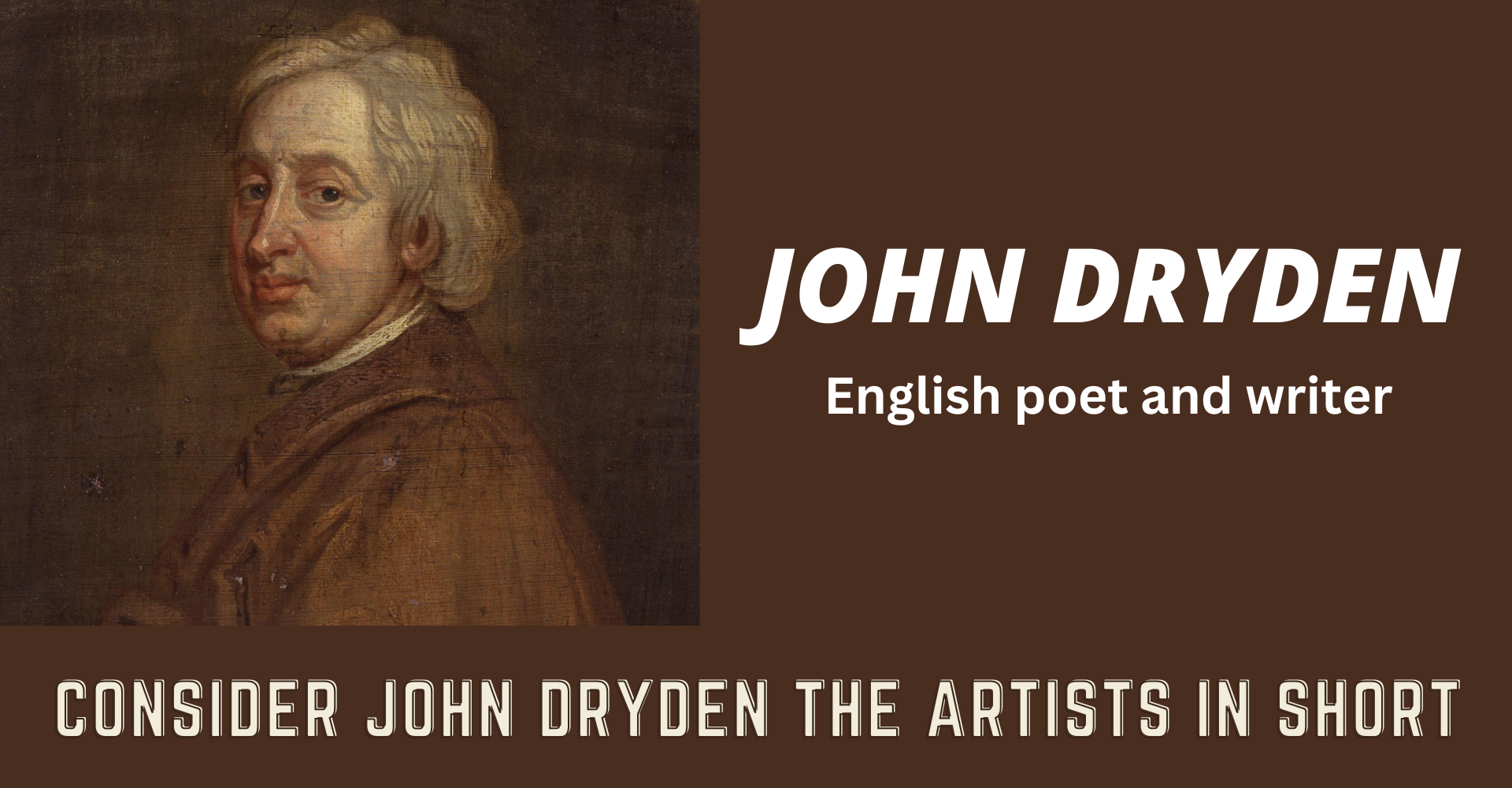Dr. Johnson declared, “What was said of Rome, addressed by Augusts, may be applied by an easy metaphor to English poetry embellished by Dryden, latericiam invenit, marmoream reliquit, he found it brick and left it marble.” In this Clark Lectures for 1954-55, Robert Graves ridiculed by adding ‘native brick, imported marble.’ Prof. Saintsbury, in his brilliant study of Dryden, launched an attack on Dr. Johnson’s statement and found Dryden’s greatness in a fresh field, that is, craftsmanship: “In one of his own last letters, Dryden states that his life-object had been to improve the language and especially the poetry. He had accomplished it. With one different estimate of the value of old English literature, we cannot indeed adopt Johnson’s famous metaphor, and say that he found English of brick and left it of marble.” The comparison of Hamlet and Macbeth to brick, with Don Sebastian and Spanish Friar for marble,’ would be absurd. But in truth the terms of the comparison are inappropriate. English as Dryden found it-and it must be remembered that he found it not the English of Shakespeare and Bacon, not even the English of such survivals as Milton and Taylor, but the English of persons like Cowley, D’Avenant and their likes-was not wholly marble or brick. No such metaphor can conveniently describe it. It was rather an instrument of machine which had in times past turned out splendid work, but work comparatively limited in kind, and liable to constant flaws and imperfections of more or less magnitude. In the hands of the men who had lately worked it. the good work had far less been in quantity and inferior in quality: the faults and plans had been great and numerous Dryden so altered the instrument and its workings that, at its best, it produced a less splendid result, than before, and became less suited for some of the highest applications, but at the same time became available for a far greater variety of ordinary purposes, was far surer in its working, without extraordinary genius on the part of the worker, and was almost secure against the grosser imperfections. The forty years’ work which is at once the record and the example of this accomplishment is itself full of faults and blemishes, but they are always committed in the effort to improve. Dryden is always striving, and consciously striving, to find better literary forms, a Bette vocabulary, better metres, better constructions, better style. “We can see the force of Dr. Johnson’s remarks,” Prof. Dobree argues, and he is very right, “in the middle of the century it was something like a magnificent heap of rubble: he left it shapely and habitable. Or if we prefer an organic metaphor, let us say that he found a tangled forest of shrubbery, and left it a grove of flowering trees. We have his beautifully modulated flow, the variation of phrase from the long supple sentence to the epigrammatic thrust, as also vigour, the incisive stress where he wants it, the clarification of meaning.”
Character of Dryden’s Couplets : Dryden has established himself as a master of couplet-form which has become one of the chief forms of English poetry. He still remains their most individual writer. David Nichol Smith notes that Dryden’s couplets “have a lift and swell which carry the reader in continual expectation which often carried Dryden himself beyond the strict limits of meter, and though in his later moments he tended to use the triplet and the alexandrine too frequently, and occasionally, even the line of fourteen syllables at his best he won by the conclusive and characteristic effect.” To quote a few examples:
“For close designs and crooked counsels fit,
Sagacious, blood and turbulent of wit,
Restless, influxes in principles and place,
In power unpleased, impatient of disgrace;
Fretted the pigmy body to decay
An o’er-informed the tenement of clay.”
PLEASE HELP ME TO REACH 1000 SUBSCRIBER ON MY COOKING YT CHANNEL (CLICK HERE)











